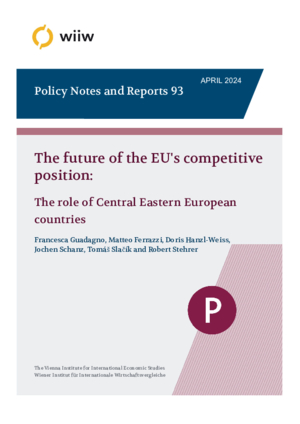The future of the EU's competitive position: The role of Central Eastern European countries
Matteo Ferrazzi, Francesca Guadagno, Doris Hanzl-Weiss, Jochen Schanz, Tomáš Slačík and Robert Stehrer
wiiw Policy Note/Policy Report No. 93, April 2025
24 pages including 1 Table, 8 Figures and 2 Boxes
The Draghi Report recommended actions to secure the long-term EU competitive position but did not discuss the challenges related to specific countries or regional groups, including those of Central and Eastern European (CEE) countries. While CEE economies remain focused on manufacturing, especially the automotive industry, they are gradually shifting from being the EU's manufacturing hub to developing higher value-added activities. However, income convergence has slowed, suggesting the need to rethink their growth model. Our research highlights growth opportunities and suggests ways to reduce barriers to innovation. Policy should focus on three areas: strengthening human capital, fostering innovation, and addressing energy intensity and its relatively high costs. Key actions include increasing labour market participation, ensuring access to start-up finance and risk capital, and reducing the region’s reliance on brown energy, particularly through grid and generation investment and the development of greener businesses.
Keywords: Competitiveness, trade, innovation, Central Eastern Europe
JEL classification: F14, F15, O11, O47, O52
Countries covered: CEE
Research Areas: International Trade, Competitiveness and FDI
